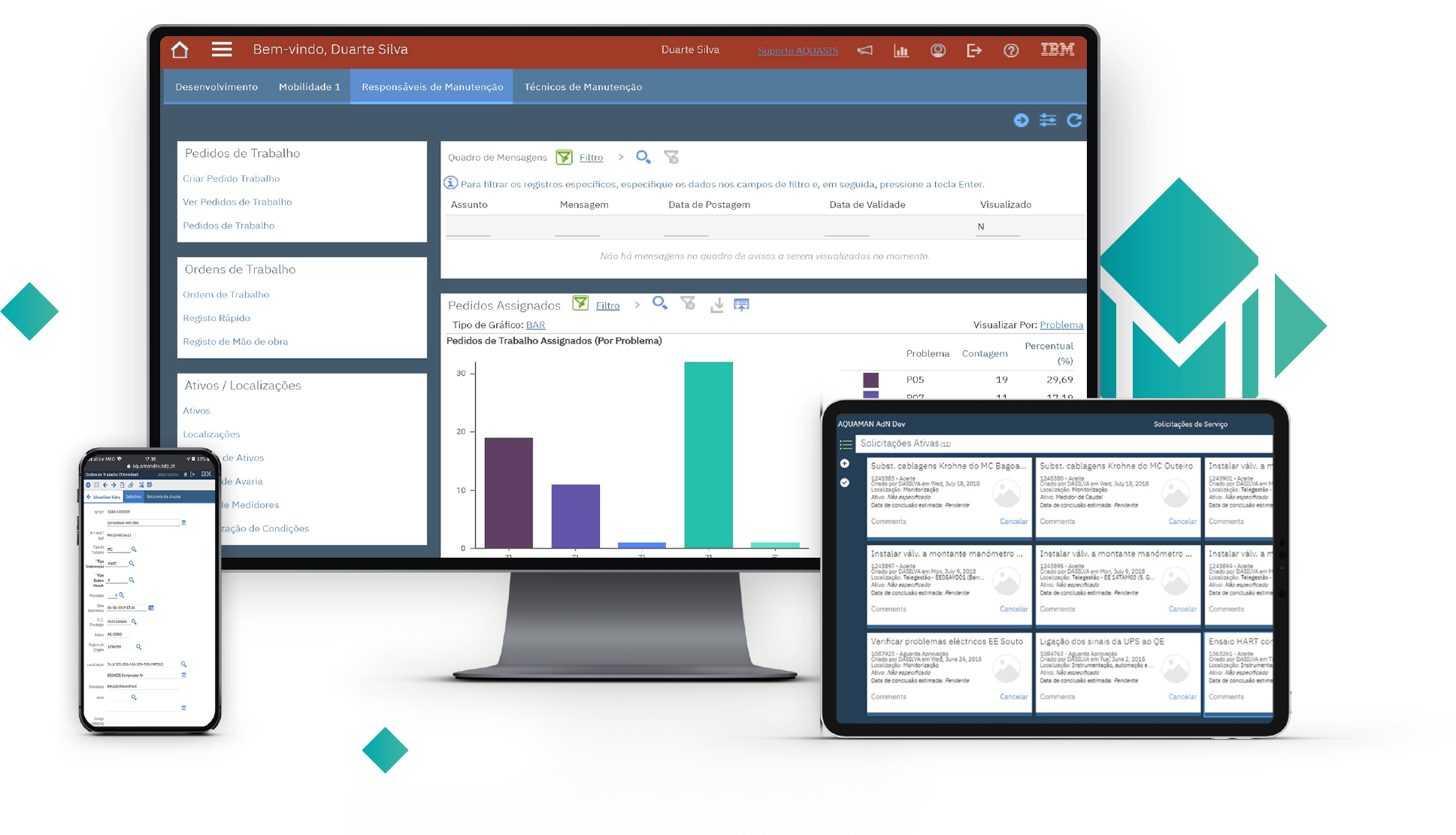
Integrated Asset and Maintenance Management
How does it work?
Goals
- Functional and operational organisation of all infrastructures
- Data systematisation
- Development of an analytical structure
- Stocktaking of maintenance target areas
- Warehouse management
- Cost reduction and improving ROA (Return on Assets) and OEE (Operational Equipment Effectiveness)
- Organisation of procedures and service orders
Modules - Processes
- Planning (Scheduler), where services orders and activities scheduled for the assets can be viewed
- Management of the lifecycle of the work order
- Mobile service centres for managing Inventory, Assets, Inspections, Requests and Service Orders
- Production of indicators (KPI)
- Georeferencing Locations / Assets / Services
- Production of reports (research)
- Analytical
- Service Centre
- Service Orders
- Purchases
- Inventory
- Contracts
- Planning
- Preventive Maintenance
- Building Information Models (BIM)
- Work Centres
- Mobility (Telephone and Tablet)
- Integration
